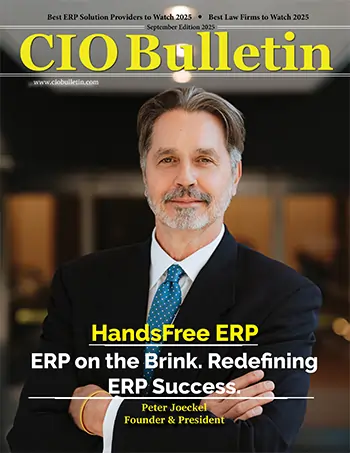Home Industry Healthcare The Future of Healthcare Autom...
Healthcare

CIO Bulletin
05 Febuary, 2025
Automation is reshaping healthcare. It’s improving experiences for patients while streamlining operations for providers.
From smarter billing to robotic pharmacy systems, technology simplifies care delivery.
This article explores current and emerging tools that are transforming healthcare efficiency and accessibility in ways we once only imagined possible.
Billing errors frustrate patients and delay payments. Automated billing systems simplify the process, improving accuracy and efficiency.
These tools use algorithms to catch common mistakes, flag discrepancies, and ensure insurance compliance. They save time by reducing manual entry work while minimizing costly errors for staff.
When automated medical billing tools are expertly integrated with EHRs, your practice management system, and clearinghouses to address all your healthcare practice’s billing needs, workflows become smoother.
Patients receive accurate bills faster. Staff spend less time resolving issues. This enhances satisfaction for everyone involved while improving financial outcomes in healthcare facilities.
Patients often struggle to find quick answers or schedule appointments conveniently. Healthcare chatbots simplify these tasks by providing immediate assistance through user-friendly interfaces.
These systems handle scheduling, provide reminders, answer common questions about symptoms or services, and guide patients through basic processes like form submissions.
They are available 24/7, improving access for patients while reducing phone call volumes for administrative staff.
By managing routine inquiries efficiently, chatbots free up staff time for more complex tasks. And patients enjoy faster responses and smoother communication with their providers.
Chatbots can even be used for marketing automation!
Pharmacies face high demand, from managing prescriptions to inventory. Robotic systems streamline these operations by automating tasks like prescription dispensing and stock management.
These robots can sort, label, and fill prescriptions accurately within minutes. They can also track inventory in real time, ensuring medications are always well-stocked without over-ordering or waste.
This automation reduces wait times for patients picking up their medications. It also decreases human errors that could compromise safety.
With robotic assistance handling repetitive tasks, pharmacy staff can focus on patient consultations and personalized care - creating a smoother experience for both sides while improving operational efficiency significantly.
Predictive analytics uses patient data to anticipate health risks and recommend personalized care.
By analyzing patterns in medical records, lab results, and even wearable devices, these tools help healthcare providers identify potential issues early.
For example, algorithms can flag patients at risk of chronic conditions like diabetes or heart disease before symptoms appear.
Providers can use this information to develop proactive treatment plans tailored to individual needs.
This approach leads to earlier interventions that improve patient outcomes. It also optimizes resources by focusing on preventive care rather than costly emergency treatments - benefiting both patients and the efficiency of healthcare facilities.
Virtual health assistants bring a personal touch to telemedicine by guiding patients through their care journey. These AI-powered tools assist with scheduling, answering health-related questions, and offering medication reminders.
Unlike basic chatbots, they integrate patient history and provide real-time support during online consultations. For example, they may help patients describe symptoms more clearly or navigate digital platforms seamlessly.
This technology enhances access to care for patients in remote areas while reducing administrative tasks for healthcare providers. By creating a more interactive telehealth experience, virtual assistants improve satisfaction on both sides and ensure smoother operations overall.
Lastly, autonomous drones are beginning to transform medical logistics by delivering essential supplies quickly and efficiently.
These drones transport medications, vaccines, or even lab samples to remote or underserved areas without delays.
Equipped with GPS and advanced sensors, they navigate safely while automating the entire delivery process.
This reduces dependency on traditional transport methods that may face roadblocks or delays.
Patients benefit from faster access to critical care items, while healthcare facilities save time and resources - making supply chains more reliable than ever before.







